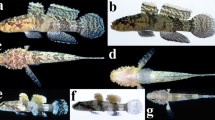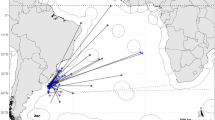Abstract
Tentacles of the sea anemone, Nematostella vectensis, are covered with hair bundles. Hair bundles were deflected by water jets to test whether they are mechanoreceptors. Electrophysiological recordings confirm that deflections of hair bundles induce transients in membrane current. In a different species of anemone, hair bundle mechanoreceptors are known to change shape and responsiveness according to the activity of chemoreceptors that bind prey-derived compounds including N-acetylated sugars. In Nematostella, hair bundles significantly elongate upon exposure to NANA, an N-acetylated sugar. Based on a bioassay in which discharged nematocysts are counted in gelatin-coated test probes touched to tentacles, we find that NANA shifts vibration dependent discharge of basitrich nematocysts to lower frequencies overlapping those produced during swimming by known prey including planktonic crustaceans. Furthermore, we find for the first time that vibration detection extends at least 2.5 cm beyond the tentacle tips. Thus, Nematostella likely employs its hair bundles to detect swimming movements of nearby prey.







Similar content being viewed by others
References
Ashmore JF (1991) The electrophysiology of hair cells. Annu Rev Physiol 53:465–476
Bleckmann H, Topp G (1981) Surface wave sensitivity of the lateral line organs of the topminnow Aplocheilus lineatus. Naturwissenschaften 68:624–625
Bolz H, von Brederlow B, Ramirez A, Bryda EC, Kutsche K, Nothwang HG, Seeliger M, Cabrera M, Vila MC, Molina OP (2001) Mutation of CDH23, encoding a new member of the cadherin gene family, causes Usher syndrome type 1D. Nat Genet 27:108–112
Bork JM, Peters LM, Riazuddin S, Bernstein SL, Ahmed ZM, Ness SL, Polomeno R, Ramesh A, Schloss M, Srisailpathy CR (2001) Usher syndrome 1D and nonsyndromic autosomal recessive deafness DFNB12 are caused by allelic mutations of the novel cadherin-like gene CDH23. Am J Hum Genet 68:26–37
Budelmann BU, Bleckmann H (1988) A lateral line analogue in cephalopods: water waves generate generate microphonic potentials in the epidermal head lines of Sepia and Lolliguncula. J Comp Physiol A 163:1–5
Darling JA, Reitzel AR, Burton PM, Mazza ME, Ryan JF, Sullivan JC, Finnerty JR (2005) Rising starlet: the starlet sea anemone, Nematostella vectensis. Bioessays 27:211–221
Di Palma F, Holme RH, Bryda EC, Belyantseva IA, Pellegrino R, Kachar B, Steel KP, Noben-Trauth K (2001) Mutations in Cdh23, encoding a new type of cadherin, cause stereocilia disorganization in waltzer, the mouse model for Usher syndrome type 1D. Nat Genet 27:103–107
Gallager SM (1993) Hydrodynamic disturbances produced by small zooplankton: case study for the veliger larva of a bivalve mollusk. J Plankton Res 15:1277–1296
Hand C, Uhlinger KR (1992) The culture, sexual and asexual reproduction, and growth of the sea anemone Nematostella vectensis. Biol Bull 182:169–176
Hand C, Uhlinger KR (1994) The unique, widely distributed, estuarine sea anemone Nematostella vectensis Stephenson: a review, new facts and questions. Estuaries 17:508–510
Howard J, Roberts WM, Hudspeth AJ (1988) Mechanoelectrical transduction by hair cells. Annu Rev Biophys Chem 17:99–124
Hudspeth AJ (1985) The cellular basis of hearing: the biophysics of hair cells. Science 230:745–752
Hudspeth AJ (1997) How hearing happens. Neuron 19:947–950
Kachar B (1985) Asymmetric illumination contrast: a method of image formation for video light microscopy. Science 227:766–768
LeMasurier M, Gillespie PG (2005) Hair-cell mechanotransduction and cochlear amplification. Neuron 48:403–415
Mariscal RN (1974) Nematocysts. In: Muscatine L, Lenhoff HM (eds) Coelenterate biology reviews and new perspectives. Academic, New York, pp 129–178
Martindale MQ, Pang K, Finnerty JR (2004) Investigating the origins of triploblasty: ‘mesodermal’ gene expression in a diploblastic animal, the sea anemone Nematostella vectensis (phylum, Cnidaria; class, Anthozoa). Development 131:2463–2474
Matus DQ, Pang K, Daly M, Martindale MQ (2007) Expression of Pax gene family members in the antozoan cnidarian, Nematostella vectensis. Evol Dev 9:25–38
Mire P, Nasse J (2002) Hair bundle motility induced by chemoreceptors in anemones. Hear Res 163:111–120
Mire P, Watson GM (1997) Mechanotransduction of hair bundles arising from multicellular complexes in anemones. Hear Res 113:224–234
Mire-Thibodeaux P, Watson GM (1994) Morphodynamic hair bundles arising from sensory cell/supporting cell complexes frequency-tune nematocyst discharge in sea anemones. J Exp Zool 268:281–292
Montgomery JC, MacDonald JA (1987) Sensory tuning of the lateral line receptors in Antartic fish to the movements of planktonic prey. Science 235:195–196
Nicolson T, Rusch A, Friedrich RW, Granato M, Ruppersberg JP, Nüsslein-Volhand C (1998) Genetic analysis of vertebrate sensory hair cell mechanosensation: the zebrafish circler mutants. Neuron 20:271–283
Sebens KP (1998 Marine flora and fauna of the Eastern United States. Anthozoa: Actiniaria, Corallimorpharia, Ceriantharia and Zoanthidea. N.O.A.A. Technical Rpt. NMFS. 141. 68 pp
Siemens J, Lillo C, Dumont RA, Reynolds A, Williams DS, Gillespie PG, Muller U (2004) Cadherin 23 is a component of the tip link in hair-cell stereocilia. Nature 428:950–955
Sollner C, Rauch GJ, Siemens J, Geisler R, Schuster SC, Muller U, Nicolson T, Tubingen 2000 Screening Consortium (2004) Mutations in cadherin 23 affect tip links in zebrafish sensory hair cells. Nature 428:955–959
Sullivan JC, Ryan JF, Watson JA, Webb J, Mullikan JC, Rokhsar D, Finnerty JR (2006) Stellabase: the Nematostella vectensis genomics database. Nucleic Acids Res 34:D495–D499
Tautz J, Sandeman DC (1980) The detection of waterborne vibration by sensory hairs on the chelae of the crayfish. J Exp Biol 88:351–356
Watson GM, Hessinger DA (1989) Cnidocyte mechanoreceptors are tuned to the movements of swimming prey by chemoreceptors. Science 243:1589–1591
Watson GM, Mariscal RN (1983) Comparative ultrastructure of catch tentacles and feeding tentacles in the sea anemone Haliplanella. Tissue Cell 15:939–953
Watson GM, Mire P (2004) Dynamic tuning of hair bundle mechanoreceptors in a sea anemone during predation. Hydrobiologica 530(531):123–128
Watson GM, Roberts J (1995) Chemoreceptor-mediated polymerization and depolymerization of actin in hair bundles of sea anemones. Cell Motil Cytoskel 30:208–220
Watson GM, Mire P, Hudson RR (1997) Hair bundles of sea anemones as a model system for vertebrate hair bundles. Hear Res 107:53–66
Watson GM, Mire P, Hudson RR (1998) Frequency specificity of vibration dependent discharge of nematocysts in sea anemones. J Exp Zool 281:582–593
Watson GM, Pham L, Graugnard EM, Mire P (2008) Cadherin 23-like polypeptide in hair bundle mechanoreceptors of sea anemones. J Comp Physiol A 194:811–820
Acknowledgments
We appreciate financial support from the National Science Foundation of the United States (NSF IOB0542574). We appreciate critical comments by two anonymous reviewers and J. Malcolm Shick.
Author information
Authors and Affiliations
Corresponding author
Additional information
Communicated by U. Sommer.
Rights and permissions
About this article
Cite this article
Watson, G.M., Mire, P. & Kinler, K.M. Mechanosensitivity in the model sea anemone Nematostella vectensis . Mar Biol 156, 2129–2137 (2009). https://doi.org/10.1007/s00227-009-1243-9
Received:
Accepted:
Published:
Issue Date:
DOI: https://doi.org/10.1007/s00227-009-1243-9




